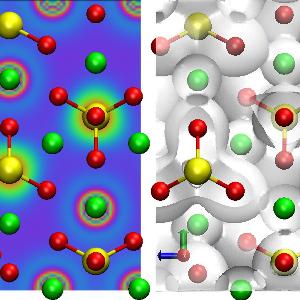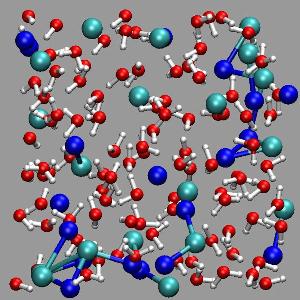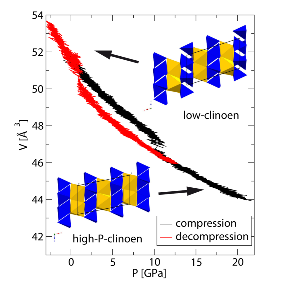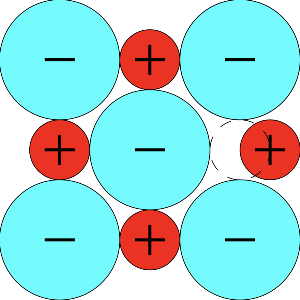Prof. Sandro Jahn
Professor und Inhaber des Lehrstuhles für Wechselwirkung von Geomaterialien und Lebewesen
LMU
Direktor der Mineralogischen Staatssammlung München und des Museums Mineralogia

Sandro Jahn has been Professor for Interaction of Geomaterials and Living Organisms at LMU Munich since 2024, where he also directs the Mineralogical State Collection. Prior to this, he held a professorship in Mineralogy and Crystallography at the University of Cologne from 2015 to 2024, following research positions at GFZ Potsdam and the University of Oxford.
CV
since 2024 Professor of Interaction of geomaterials and living organisms
2015 - 2024 Professor of Mineralogy and Crystallography, Institute for Geology and Mineralogy, University of Cologne
2008 - 2015 Leader of a DFG-funded Emmy-Noether Research Group, GFZ Potsdam
2004 - 2008 Postdoc, GFZ German Research Centre for Geosciences, Potsdam
2002 - 2004 Postdoc, Physical and Theoretical Chemistry Laboratory, University of Oxford, UK
2003 PhD in Experimental Physics, Technical University of Chemnitz
2000 - 2002 PhD Student, Institut Laue-Langevin Grenoble, France
1999 - 2002 Research Assistant, Institute of Physics, Technical University of Chemnitz
The deepest borehole in the world, at 12 km deep, only reaches a fraction of the Earth's radius of 6371 km. We therefore only have direct access to a very small part of the Earth. Geophysicists, geologists and geochemists have produced many models of the Earth's structure and composition on this basis. However, to be able to test these models or understand contradictory results, we must understand the physical properties of geologically relevant materials under the pressure and temperature conditions of the Earth's interior. My research focuses on understanding the structure and dynamics of the Earth’s interior through a multidisciplinary approach. I combine advanced computational chemistry methods, including ab initio and classical molecular dynamics simulations, with experimental high-pressure mineralogy. My work specifically investigates the atomic structure, physical and thermodynamic properties of minerals, melts, and fluids under ambient to extreme conditions, as well as processes occurring at grain and phase boundaries. This integrated approach allows me to develop realistic models that help to interpret experimental data and predict material behavior in the Earth's inaccessible interior. Ultimately, my goal is to deepen the understanding of our planet's evolution and its present state.

© Sandro Jahn
To understand the physical properties of geologically relevant materials under the pressure and temperature conditions of the Earth's interior, we simulate material behavior at extreme conditions both in the laboratory and on the computer. We perform high pressure experiments in so-called diamond anvil cells, in which samples are pressed together between two perfectly aligned diamonds and, if necessary, heated simultaneously with lasers or an external electrical heater. The sample can then be examined in-situ (during the experiment) or ex-situ (after the experiment) using a variety of methods, such as X-ray diffraction, Raman spectroscopy or X-ray absorption spectroscopy. In computer simulations, we use first-principles methods based on density functional theory, DFT, to study the structural, physical and thermodynamic properties of minerals and other crystalline materials. The simulations allow us to predict the relative stability of polymorphic phases at different thermodynamic conditions. Structural models are often verified by comparing vibrational or electronic spectra from the simulations to experimental data.
Running project:
Haigis, V., Salanne, M., & Jahn, S. (2012) Thermal conductivity of MgO, MgSiO3 perovskite and post-perovskite in the Earth’s deep mantle. Earth and Planetary Science Letters, 355-356, 102–108. https://doi.org/10.1016/j.epsl.2012.09.002
Martirosyan, N., Efthimiopoulos, I., Jahn, S., Lobanov, S., Wirth, R., Reichmann, H., & Koch-Müller, M. (2024). High-pressure polymorphs of ferroan dolomite: Possible host structures for carbon in the lower mantle. American Mineralogist, 109(4), 701–708. https://doi.org/10.2138/am-2022-8737

© Sandro Jahn
The investigation of melt properties at very high pressures is very difficult, so silicate glasses (quickly cooled silicate melts) are often used as analogue materials to gain an initial understanding of the changes caused by pressure. The physical properties of melts and glasses are of great importance for understanding the development of the Earth and its current state. It is now assumed that large impacts during the formation of the Earth (e.g. the lunar-forming collision) led to the entire Earth being melted. To understand the processes at that time, we need an understanding of the properties of the pressure and temperature conditions of the Earth's interior. Silicate melts also play a central role in the processes of the recent Earth. This is visibly reflected on the surface in volcanism, but melts are also suspected in the deep Earth, e.g. at the core-mantle boundary (2891 km depth). In particular, we are investigating the structures and densities of silicate glasses using angle-dispersive X-ray diffraction and Raman spectroscopy, complemented by molecular dynamics simulations, in the MgO-CaO-FeO-Al2O3-SiO2 system up to several tenth of GPa. New technical developments have made it possible to obtain structural information on silicate glasses in the entire pressure range of the Earth's mantle (up to 135 GPa). This provides important information for understanding the Earth today and its development over time.
Drewitt, J. W. E., Jahn, S., Sanloup, C., de Grouchy, C., Garbarino, G., & Hennet, L. (2015). Development of chemical and topological structure in aluminosilicate liquids and glasses at high pressure. Journal of Physics: Condensed Matter, 27(10), 105103. https://doi.org/10.1088/0953-8984/27/10/105103
Jahn, S. (2022). Molecular Simulations of Oxide and Silicate Melts and Glasses. Reviews in Mineralogy and Geochemistry, 87, 193–227. https://doi.org/10.1515/9781501510939-006

© Sandro Jahn
Aqueous fluids are involved in most geological processes in the Earth's crust and mantle. We are interested in how their molecular structure and dynamics influence their physical and thermodynamic properties, such as density, viscosity, or solute concentrations. We also study the chemical speciation and hydration in aqueous fluids, which are important parameters for thermodynamic modeling. Externally heated hydrothermal diamond anvil cells (HDAC) are used for in-situ experiments on solids and fluids at high temperatures of up to 1000 K and high pressures up to 1 GPa. Sample properties are measured using, e.g., Raman, X-ray fluorescence and X-ray absorption spectroscopy as well as X-ray diffraction. We also perform molecular dynamics (MD) simulations using both classical and quantum mechanical models for the particle interactions. The latter, so called ab initio molecular dynamics simulations, are performed on supercomputers. The simulations not only yield structural models but also predict properties of fluids at conditions of pressure and temperature that are not easily accessible experimentally.
Running project:
Sahle, C. J., Sternemann, C., Schmidt, C., Lehtola, S., Jahn, S., Simonelli, L., Huotari, S., Hakala, M., Pylkkänen, T., Nyrow, A., Mende, K., Tolan, M., Hämäläinen, K., & Wilke, M. (2013). Microscopic structure of water at elevated pressures and temperatures. Proceedings of the National Academy of Sciences, 110(16), 6301–6306. https://doi.org/10.1073/pnas.1220301110
Loges, A., Manni, M., Louvel, M., Wilke, M., Jahn, S., Welter, E., Borchert, M., Qiao, S., Klemme, S., Keller, B. G., & John, T. (2024) Complexation of Zr and Hf in fluoride-rich hydrothermal aqueous fluids and its significance for high field strength element fractionation. Geochimica et Cosmochimica Acta 366, 167–181. https://doi.org/10.1016/j.gca.2023.12.013

© Sandro Jahn
Structural phase transitions between different minerals are driven by changes in temperature, pressure and/or chemical composition. Thermodynamics determines which phases are the most stable and should occur under equilibrium conditions. However, phase transitions are often hindered by slow kinetics. Our research focuses on the relative phase stability and the mechanisms and timings of phase transitions for geologically and technologically important systems. The properties of solids and liquids close to interfaces are often different from the bulk. Also, most geochemical processes such as chemical reactions or material transport are somehow related to interfaces. In several projects, we have been studying the atomic structure of mineral grain boundaries, as well as melting and crystallization processes, and material transport along grain boundaries.
Running project:
Wagner, J., Adjaoud, O., Marquardt, K. T., & Jahn, S. (2016). Anisotropy of self-diffusion in forsterite grain boundaries derived from molecular dynamics simulations. Contributions to Mineralogy and Petrology, 171(12), 98. https://doi.org/10.1007/s00410-016-1308-y
Wehmann, N., Lenting, C., & Jahn, S. (2023). Calcium sulfates in planetary surface environments, Global and Planetary Change 230, 104257. https://doi.org/10.1016/j.gloplacha.2023.104257

© Sandro Jahn
One of the biggest challenges for molecular simulations is the development of accurate and efficient ways to represent particle interactions. With the fast-growing availability of computing power, electronic structure calculations based on density functional theory (DFT) have become the most powerful tool for applications in geomaterials modeling. We are using DFT codes (e.g. CP2K, ABINIT, VASP) to study static and dynamic properties of minerals, melts and fluids. For larger scale simulations (number of atoms >> 1000 and timescales >> 100 ps) as needed, e.g., to study properties of melts, defect crystals or interfaces we use more efficient interaction potentials. Advanced polarizable or reactive force fields and, more recently, machine-learning potentials are trained using first-principles simulations representing (geo)materials in a wide range of compositions, pressures and temperatures. We are actively participating in the improvement of such models.
Running project:
Jahn, S., & Madden, P. A. (2007). Modeling Earth materials from crustal to lower mantle conditions: A transferable set of interaction potentials for the CMAS system. Physics of the Earth and Planetary Interiors, 162(1-2), 129–139. https://doi.org/10.1016/j.pepi.2007.03.001
Chattopadhyay, R., & Jahn, S. (2025) Structural and thermodynamic properties of La3+ in chloride-bearing hydrothermal fluids - Insights from a new ab initio-based polarizable force field. Journal of Molecular Liquids, in review.